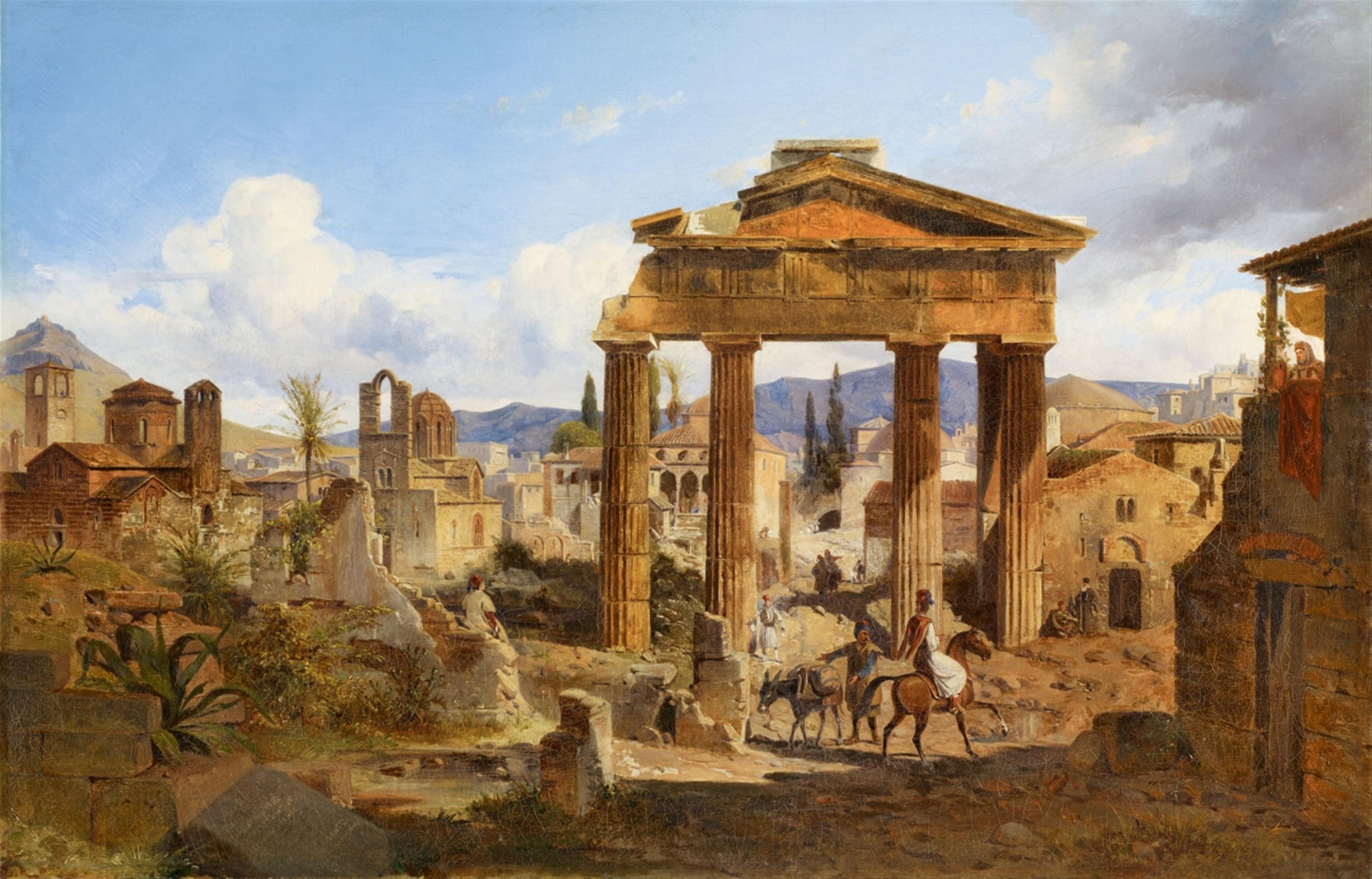Ludwig Lange
The Gate of Athena Archegetis in Athens and the Roman Agora seen from the West
Oil on canvas. 59 x 91 cm.
Signed, inscribed, and dated in Greek letters lower left (on the collapsed stone slab): A AANTE MONAXOS 1842 (L. Lange München 1842).
Ludwig Lange first trained as an architect before becoming a pupil of the landscape painter Carl Rottmann in 1830. Lange accompanied Rottmann when he travelled to Greece at the behest of Ludwig I, where he advised him on his architectural drawings. Lange was appointed architectural councillor by King Otto of Greece and he taught for two years at the Royal Gymnasium in Athens. He returned to Munich in 1838, where he was appointed Professor of Architecture at the Academy.
Ludwig Lange worked as both an architect and architectural draughtsman. Finished examples of his designs include the “Museum der bildenden Künste” in Leipzig and the archaeological museum in Athens; his design for the new council buildings in Munich was never realised. Lange has maintained his reputation as an architectural draughtsman to this day. His works combined exactness of perspective and architectural detail with the painterly qualities of washes and watercolours.
Lange rarely painted in oils, and this explains the scarcity of such pieces on the market. The present work testifies to Lange's long years in Greece, and was painted just a few years after his return to Munich. With his ususal precision, the artist depicts the area in which the Greek and Roman agora was located in antiquity. The square formed the centre of the old town of Athens, and the ancient buildings located there were excavated at a later date. The Propylon of Athena Archegetis, which formed the west entrance to the Roman agora, is depicted in the foreground of this work. Behind this, we see the Fatihiya mosque and the hammam of Oula Bey, which was later demolished to allow for archaeological excavation. The Byzantine church of Elias (also subsequently demolished) and of the Taxiarchs can be seen on the left half of the image.
A drawing by Lange in pencil, ink, and watercolour depicting this exact view is housed in the Staatliche Graphische Sammlung in Munich (inv. no. 35782). Lange has varied the figures in the painted work; the drawing depicts two camels in place of the rider and the donkey in the painted work (for the drawing, cf. the exhib. cat.: “Das neue Hellas. Griechen und Bayern zur Zeit Ludwigs I.“, ed. Reinhold Baumstark, Bayerisches Nationalmuseum München, 9.11.1999-13.2.2000, Munich 1999, p. 511f, no. 373, illus.).
Ludwig Lange bequeathed the present work together with a Roman veduta by Leo von Klenze to his daughter Eugenie Napoleone Ernestine Emilie Antonie (1844-1929) and her husband Ernst Eduard Voit (1838-1921, professor of applied physics at the TH München since 1885) and the painting has remained in family ownership ever since.
Provenance
By descent from Ludwig Lange to his daughter Eugenie Napoleone Ernestine Emilie Antonie (1844-1929) and her husband Ernst Eduard Voit (1838-1921). - Subsequently in family ownership.

